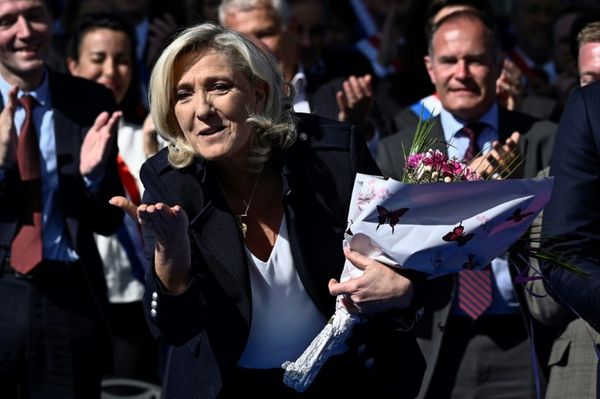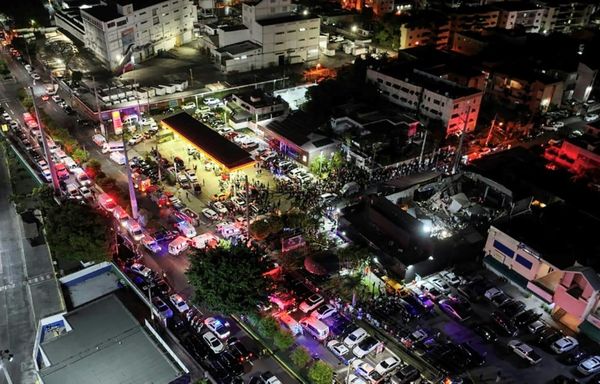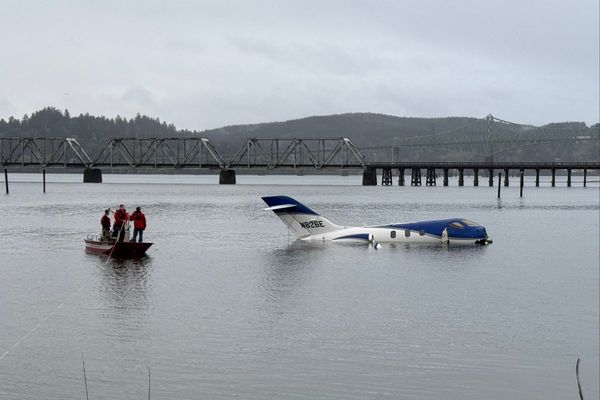
The Pentagon said Wednesday it has begun deploying 1,500 active duty troops to help secure the southern border, putting in motion plans President Donald Trump laid out in executive orders shortly after he took office to crack down on immigration.
Acting Defense Secretary Robert Salesses said the troops will fly helicopters to assist Border Patrol agents and help in the construction of barriers. The Pentagon also will provide military aircraft for Department of Homeland Security deportation flights for more than 5,000 detained migrants.
The number of troops and their mission may soon change, Salesses said in a statement. “This is just the beginning,” he said.
“In short order, the department will develop and execute additional missions in cooperation with DHS, federal agencies, and state partners to address the full range of threats outlined by the President at our nation’s borders," Salesses said.
Defense officials added that the department is prepared to provide many more troops if asked, including up to 2,000 more Marines.
Officials said there was no plan now for the troops to do law enforcement, which would put them in a dramatically different role for the first time in decades. Any decision on this would be made by the White House, they said.
The active duty forces will join the roughly 2,500 U.S. National Guard and Reserve forces already there. Until this deployment, there were no active duty troops working along the roughly 2,000-mile border.
A couple hundred troops started moving to the border earlier Wednesday, according to a senior military official. The military official and a defense official briefed reporters on the condition of anonymity to provide additional details on the deployment. The troops will include 500 Marines from Camp Pendleton in California, and the remainder will be Army.
The U.S. forces being used for the deportation flights are separate from the 1,500 deployed for the border mission. Those flights will involve four Air Force aircraft based in San Diego an El Paso, along with crews and maintenance personnel.
Troops have done similar duties in support of Border Patrol agents in the past, when both Trump and former President Joe Biden sent active duty troops to the border.
Troops are prohibited by law from doing law enforcement duties under the Posse Comitatus Act, but that may change. Trump has directed through executive order that the incoming secretary of defense and incoming homeland security chief report back within 90 days if they think an 1807 law called the Insurrection Act should be invoked. That would allow those troops to be used in civilian law enforcement on U.S. soil.
The last time the act was invoked was in 1992 during rioting in Los Angeles in protest of the acquittal of four police officers charged with beating Rodney King.
The widely expected deployment, coming in Trump’s first week in office, was an early step in his long-touted plan to expand the use of the military along the border. In one of his first orders on Monday, Trump directed the defense secretary to come up with a plan to “seal the borders” and repel “unlawful mass migration.”
“This is something President Trump campaigned on,” said Karoline Leavitt, White House press secretary. “The American people have been waiting for such a time as this -- for our Department of Defense to actually implement homeland security seriously. This is a No. 1 priority for the American people.”
On Tuesday, just as Trump fired the Coast Guard commandant, Adm. Linda Fagan, the service announced it was surging more cutter ships, aircraft and personnel to the “Gulf of America” — a nod to the president’s directive to rename the Gulf of Mexico.
Trump said during his inaugural address on Monday that “I will declare a national emergency at our southern border. All illegal entry will immediately be halted, and we will begin the process of returning millions and millions of criminal aliens back to the places in which they came.”
Military personnel have been sent to the border almost continuously since the 1990s to help address migration. drug trafficking and transnational crime.
In executive orders signed Monday, Trump suggested the military would help the Department of Homeland Security with “detention space, transportation (including aircraft), and other logistics services.”
There are about 20,000 Border Patrol agents, and while the southern border is where most are located, they’re also responsible for protecting the northern border with Canada. Usually agents are tasked with looking for drug smugglers or people trying to enter the country undetected.
More recently, however, they have had to deal with migrants actively seeking out Border Patrol in order to get refuge in America — taxing the agency’s staff.
In his first term, Trump ordered active duty troops to the border in response to a caravan of migrants slowly making its way through Mexico toward the United States in 2018. More than 7,000 active duty troops were sent to Texas, Arizona and California, including military police, an assault helicopter battalion, various communications, medical and headquarters units, combat engineers, planners and public affairs units.
At the time, the Pentagon was adamant that active duty troops would not do law enforcement. So they spent much of their time transporting Border Patrol agents to and along the border, helping them erect additional vehicle barriers and fencing along the border, assisting them with communications and providing some security for border agent camps.
The military also provided Border Patrol agents with medical care, pre-packaged meals and temporary housing.
It also was not yet clear if the Trump administration will eventually order the military to use bases to house detained migrants. The defense officials said such a request has not been made as of yet.
Bases previously have been used for that purpose, and after the 2021 fall of Kabul to the Taliban, they were used to host thousands of Afghan evacuees. The facilities struggled to support the influx.
In 2018, then-Defense Secretary Jim Mattis ordered Goodfellow Air Force Base in San Angelo, Texas, to prepare to house as many as 20,000 unaccompanied migrant children, but the additional space ultimately wasn’t needed and Goodfellow was determined not to have the infrastructure necessary to support the surge.
In March 2021, the Biden administration greenlighted using property at Fort Bliss, Texas, for a detention facility to provide beds for up to 10,000 unaccompanied migrant children as border crossings increased from Mexico.
The facility, operated by DHS, was quickly overrun, with far too few case managers for the thousands of children that arrived, exposure to extreme weather and dust and unsanitary conditions, a 2022 inspector general report found.







